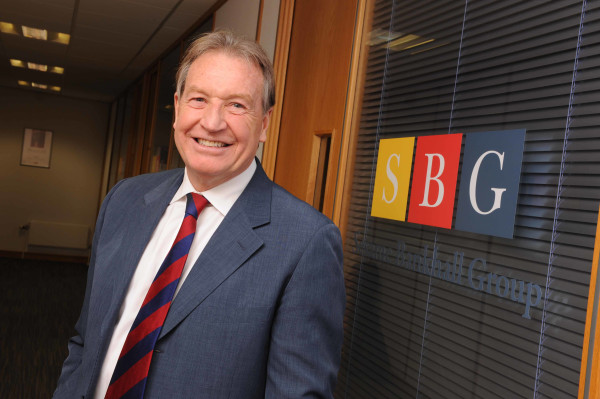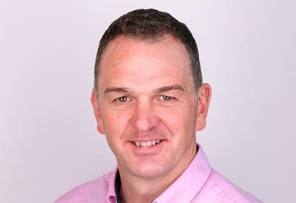

John Cowan, executive chairman of Sesame Bankhall Group, said it was all his "fault" that John Malone, the mortgage industry titan, came to be running mortgage club PMS.
Mr Cowan said: "John Malone was my next door neighbour. I was a young life insurance broker consultant and he was a broker consultant on the same patch, and we had the idea of setting up a mortgage club."
Mr Cowan was working for Scottish Amicable at the time, and he spotted an opportunity for lenders wanting to avoid fraud, offering them support, and assistance for mortgage brokers. The deal, he said, was "we'll package the mortgage for you as long as you give the brokers a share of the proc fee. I set it up and I appointed someone to do it."
PMS, as it is known in the mortgage industry, came to be one of the biggest and most successful mortgage clubs in the sector. It was also this relationship that stood Mr Cowan – and Sesame – in good stead when the company decided to diversify its business model.
In 2009 Mr Cowan became a non-executive director of the network; he knew Mr Malone and Peter Mann who ran Bankhall, a sister company to PMS. In 2009 Sesame bought both businesses.
Since then, the company has been through a fair degree of trauma, being hit with fines from the FCA over historic bad advice and operating a pay-to-play scheme with providers. The result is that, under new owner Aviva (which had mainly bought Friends Life) the new Sesame Bankhall offloaded hundreds of wealth advisers, who either went to Intrinsic or became directly authorised, operating with support from Bankhall.
Mr Cowan said: "We had already started the process during the Friends days. Friends Life believed in the business plan; when Aviva acquired Friends Life it became the accidental owner of SBG. It was to the left of agnostic about us, so we had a bit of work to do.
"I believe that post-RDR, we could not run a network for wealth advisers to the standards that we could de-risk the business for our shareholder [Aviva]. Others say they can do it, but to supervise a bunch of wealth advisers, with the number of business models that these had being to the nth degree – with different remuneration packages, for example – from a compliance perspective, it would have been an enormous job to operate to the standards that we believe were required."
The result, however, is that Sesame is no longer the biggest financial adviser firm, with that crown now going to SJP, with Intrinsic, under the Old Mutual Wealth banner, coming up fast. Intrinsic also bought the Financial Adviser School from Sesame in 2015, and it has just recruited SBG's managing director, Stephen Gazard.
Mr Gowan said: "It's a moment in time. Having been around a long time, the market goes in cycles; we're going through a consolidation period, and then it breaks out into its component parts. I think there will be a strong market for a well-run, well-capitalised business doing what we've always done."
On Mr Gazard's departure he said: "Stephen's reason for departing was a career opportunity. He saw an opportunity that was offered to him, and naturally he decided he would do that. It is only one person leaving the business; it's not affected the strategy or the structure of the business."
As a consequence of the departure, Mark Graves has been promoted to be managing director of Sesame and PMS, and Julie Sadler, compliance and risk director, will be managing director of Bankhall, with Stuart Davies, network operations director, becoming group operations director; all report directly to Mr Cowan. He claimed that although Mr Gazard was officially managing director, in effect his main focus had been Bankhall, while Mr Graves had been running Sesame and PMS already.
Mr Cowan became chairman in 2013 and was quickly made executive chairman in early 2014 by Friends Life boss, Andy Briggs, to sort out the company's problems. He said: "Andy knew me because we worked together; he asked me and I said yes – I didn't even think about it."
His plan for Sesame, now that it is focused on mortgages, is to ensure that his advisers tell their clients the challenges of taking on a mortgage, and make sure they are properly covered with insurance policies, as well as follow up several years later with their advice.
As for Bankhall, he said: "A typical business is five or six advisers inside it, and that is a really quality business. It's profitable, but it delivers excellent customer service."
Mr Cowan came to Sesame by building up a portfolio career, after leaving Prudential where he was group sales director. He said: "I stopped doing full-time executive work too early in my life. I've always worked for IFAs, and I like to be out in the field."
He added that it would be "irresponsible" not to think of succession planning, but that is all he would say on it at present. Aviva, he said was "committed long term", but for now, he is clearly in charge, steering SBG out of its recent troubles to a more sustainable future.
Melanie Tringham is features editor of Financial Adviser
John Cowan's career highlights
2014 – present: executive chairman, Sesame Bankhall Group (SBG)
2013 – 2014: chairman, SBG
2009 – 2013: non-executive director, SBG
2006 – 2013: various non-executive directorships, including Paymentshield, Foresters and TCC
2003 – 2006: general manager, National Australia Bank / MLC Investments
1999 – 2003: group sales director, Prudential
1969 – 1999: sales and marketing director, Scottish Amicable



